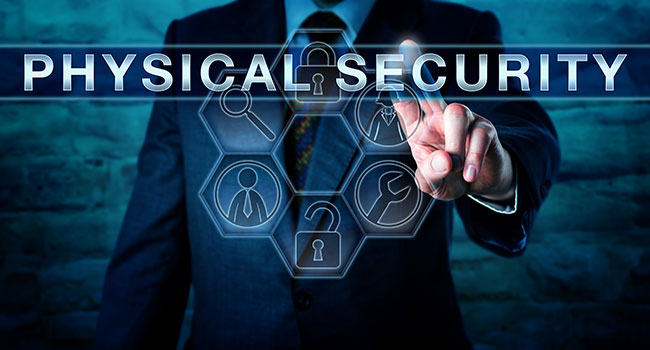
Report: Physical Threats to Business Increasing, But CEOs Are Unprepared
OnSolve, a critical event management provider that enables organizations to mitigate physical threats and remain agile when a crisis strikes, recently released its annual 2023 OnSolve Global Risk Impact Report, which found significant increases to three rising threats globally in 2022 when compared to 2021: infrastructure and technology (+688% globally, +807% in U.S.), transportation accidents (+211% globally, +296% in U.S.) and extreme weather (+72% globally, +42% in U.S.). Despite the increasing prevalence of physical threats today, most C-suite leaders are unprepared to mitigate the impact on operations and people.
The report’s conclusions are based on an examination of more than nine million global events detected by OnSolve Risk Intelligence from January 1, 2021 through December 31, 2022. Additionally, to analyze corporate approaches to physical risk mitigation alongside the physical threat data, OnSolve commissioned a survey in January 2023 of 250 CEOs based in the United States, with 100 or more employees. The survey was conducted by Censuswide, an international market research consultancy.
From tornadoes to train derailments to power outages, up to 10 physical threats occurred globally every minute in 2022. Despite this, more than half of CEOs surveyed (60 percent) have no plan to address all the most severe physical threats to their business. For almost half (46 percent), this lack of preparation means they have identified and planned for only some of the most significant threats to their organizations, leaving their people and operations at risk.
Additionally, only 37 percent of CEOs said they have a plan for extreme weather and only 29 percent have a plan for infrastructure failures. The number drops even lower to 25 percent for a plan to handle transportation accidents. This data underscores the critically rising threats OnSolve’s data uncovered for 2022 and reveals a massive gap between the level of risk and proactive preparation for the largest threats to organizations.
“Physical threats have significant ripple effects on businesses and industries, from impacting communities and workers to operational downtime and supply chain delays,” said Mark Herrington, CEO at OnSolve. “To better protect people and remain competitive, C-suite teams must lead the dialogue and be proactive in mitigating these physical threats. In the same way senior leaders were involved in building cyber security strategies and responding to the pandemic, which impacted all aspects of the business, executive leaders must be more involved in developing a strategy supported by sufficient resources for crisis mitigation.”
The OnSolve report found that the physical threat landscape continues to evolve rapidly. Key takeaways include:
- Physical threats have a cascading impact. The rise in physical threats is compounded by their interconnected ripple effects on other business operations. From road closures to power grid failures and chemical spills across entire communities, these ripple effects are the most challenging aspects of crisis preparation and management. Now more than ever, organizations must sufficiently prepare for all physical threats and the dynamic risks that may follow.
- CEOs are aware of physical threats, but more involvement in mitigation strategies is needed. Every CEO believes its organization will face at least one physical threat in 2023. CEOs have noted that preparing for physical threats is now a top priority (38%) — even more than those prioritizing economic inflation (30%). While most CEOs (78%) delegate crisis management responsibilities, 18 percent admit they do not have anyone in the C-suite overseeing physical security and duty of care.
- The C-suite is facing pressure from corporate boards and employees to address physical threats. Almost all (99%) corporate boards have asked executives for plans that combat physical threats. Meanwhile, employees are also concerned. Just over half of CEOs surveyed (51%) said their employees are sharing more concerns about physical security since the beginning of the COVID-19 pandemic.
- CEOs acknowledge technology would protect their organizations from physical threats. While 93 percent of CEOs believe technology would help protect their employees and operations from physical threats, only 26 percent say they have invested in technology for that purpose (though an additional 48 percent are prioritizing such an investment this year).
Methodology
OnSolve’s report analyzes the top risks that have occurred as a percentage of all events OnSolve detected from January 1, 2021 through December 31, 2022, that had the potential to impact its customers worldwide. The data in this report was gathered using OnSolve Risk Intelligence, an AI-powered technology that monitors over 50 risk categories of physical threats across 159 countries in real time.
OnSolve Risk Intelligence detected more than nine million global events, or physical threats, from 2021 to 2022, using AI and analyst-vetted information pulled from data sources that include local fire, police or emergency medical services departments, weather reports and alerts from government and non-government, verified sources, federal government agencies such as the Federal Bureau Investigation, Department of Homeland Security and other crisis management entities, local, national and international news, and critical event reports from verified social media feeds.
OnSolve Risk Intelligence monitors global physical threats that have an impact on its base of 30,000 customers, including half of the Fortune 100, nearly half of the Fortune 500 and 10,000 communities in the U.S., including state, regional, local and federal entities. OnSolve programmatically maps events to locations worldwide, determining which part of an organization might be at risk. This report aggregates to a country-level view year-over-year of the physical threats specific to our customers’ people and operations across their offices, plants, warehouses and office locations, and while traveling worldwide. It highlights the most significant risks impacting businesses and governments today when 2022 is compared to 2021.
The CEO research presented in this report is based on an OnSolve-commissioned CEO survey that took place in January 2023, conducted by Censuswide, an international market research consultancy. The CEO survey was executed across a sample of 250 U.S.-based CEOs with 100 or more employees.